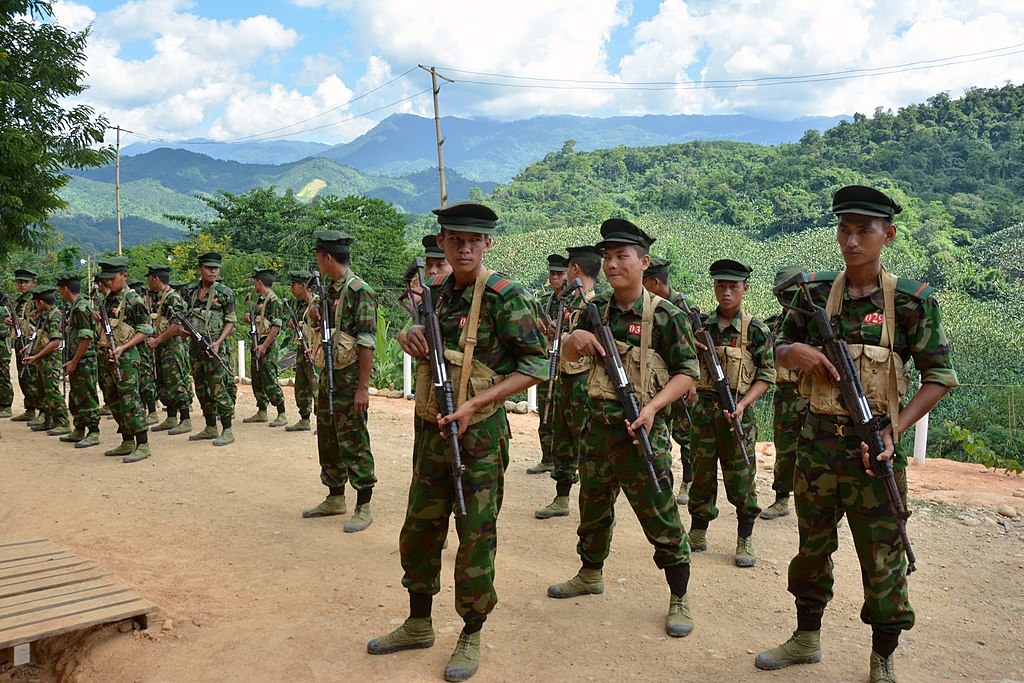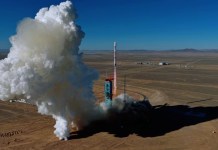The Kachin Independence Army (KIA), one of the most powerful ethnic rebel groups in Myanmar, has launched a series of attacks on military bases, amid the nationwide protests or civil disobedience against the military regime.
The KIA, which had trained several batches of India’s Northeast militants in the 1980s-90s, also established links with the Indian intelligence agency, RAW, in the past.
The latest incident was reported from a military base in Mogaung township on March 12 morning. The army then carried out a helicopter raid and launched a counter-assault on one of the KIA’s battalion headquarters, according to the local media.
A day earlier, Kachin Independence Army had attacked a military outpost in Selzin village in Hpakant Township, Kachin State. Both these places are located southwest of Kachin’s capital Myitkyina.
Former U.S ambassador to #Myanmar: “In my experience China has never worked in cooperation with any other nation to assist Myanmar, but sees the country purely as a function of its own narrow self-interest and well-being.”#WhatsHappeningInMyanmar https://t.co/481OAwY9C2
— Poppy McPherson (@poppymcp) March 15, 2021
The KIA has for long been fighting for autonomy for the northern state of Kachin within a federal Myanmar. There have been intermittent clashes between the rebels and the army since 2018 even as they were negotiating a ceasefire deal. But the situation turned worse when the military attacked a few KIA outposts after the Feb. 1 military coup.
The KIA had urged the Myanmar military not to use live ammunition against protesters in the ongoing agitation. However, the armed forces, also known as Tatmadaw, continued its brutal crackdown on civilians, killing two people on March 8.
More than 180 people have been killed across the Southeast Asian nation since the military junta staged a coup on Feb. 1.
Reports suggest as many as 10 ethnic militant groups, excluding KIA, on March 12 tried to create a strategy to protect the civilians from the Myanmar army’s brutal crackdown.
All these groups had reportedly signed a Nationwide Ceasefire Agreement with the armed forces before the coup. Now, they have pledged their support to the anti-junta protests.
Kachin Independence Army’s India Connection
The KIA once controlled most of the northern Kachin state apart from major towns. The rebels used to run their own administrative buildings, schools, clinics, and military bases.
The Kachin Independence Army was instrumental in training several armed separatist groups from India’s Northeast. The most prominent among them was the Manipuri rebel outfit PLA (should not be confused with China’s People’s Liberation Army). PLA was the first Indian rebel group that had trained with the Kachin rebels.

It is believed China had assisted the Manipuri rebels to get in touch with the KIA way back in 1985. Accordingly, they had undergone arms and explosives training in Kachin.
Thereafter, the United Liberation Front of Asom or ULFA sent its first batch of cadres to KIA camps in 1987, followed by a second batch a year later. Another rebel organization from Manipur, the Kuki National Army, had also established links with KIA in the 1990s.
It is said the KIA and ULFA had jointly carried out operations against the Myanmar military. But plans for a long-time association hit roadblocks after the Kachin rebels were said to have made a pact with the Indian spy agency, the Research and Analysis Wing (RAW), in 1989.
As per the deal, RAW would supply weapons to the KIA on the condition that the latter would stop harboring militants from India’s Northeast. After the pact, the KIA had expected a large consignment of arms, but that did not materialize. Insurgency experts say only two consignments had reached the Kachin rebels through Vijay Nagar in Arunachal Pradesh’s Changlang district, bordering Myanmar.
Such a powerful rebel group Kachin Independence Army was that it had set up a whole town, which came to be known as Laiza. “When the KIA signed a ceasefire agreement with the Tatmadaw in February 1994, the camps it still maintained after losing several positions were even more fortified with an entirely new headquarters, which later became a town, established at Laiza,” noted author and Myanmar expert Bertil Lintner said.
A Long-Drawn Internal Conflict
There have been clashes between the Kachin Independence Army and Tatmadaw since a 17-year-old ceasefire agreement collapsed in 2011. The war in Kachin has turned more than 100,000 civilians into internally displaced persons (IDPs).
The successive governments in Myanmar have struggled to find a solution to the Kachin conflict. Even Aung San Suu Kyi’s National League for Democracy (NLD) did not taste much success and failed to persuade KIA for talks. The latter has opposed some conditions laid down by the government.
#Kachin #Myanmar: More than 5,000 people newly displaced by clashes between Myanmar Military and Kachin Independence Army (KIA). There are reports of civilians that are unable to leave conflict-affected areas in Tanai, Hpakant and Injingyang townships. https://t.co/Isotfzfo2c pic.twitter.com/1VnBXRfhCo
— OCHA Myanmar (@ochamyanmar) April 30, 2018
In January this year, then-State Counselor Suu Kyi had unveiled what she called a ‘New Peace Architecture” that would allow participation of political groups, civil society organizations, and the public.
The NLD government had been trying to negotiate with the members of the Northern Alliance—the Kachin Independence Army, Myanmar National Democratic Alliance Army, Ta’ang National Liberation Army and Arakan Army (AA)— to sign individual bilateral ceasefire agreements.
But all these efforts seemed to have gone in vain with the February 1 military even though the junta insisted that it would continue the peace process. Recently, it delisted the Arakan Army as a terrorist organization citing that the militant outfit operating in Rakhine state has stopped its offensives against Tatmadaw since the November elections.




